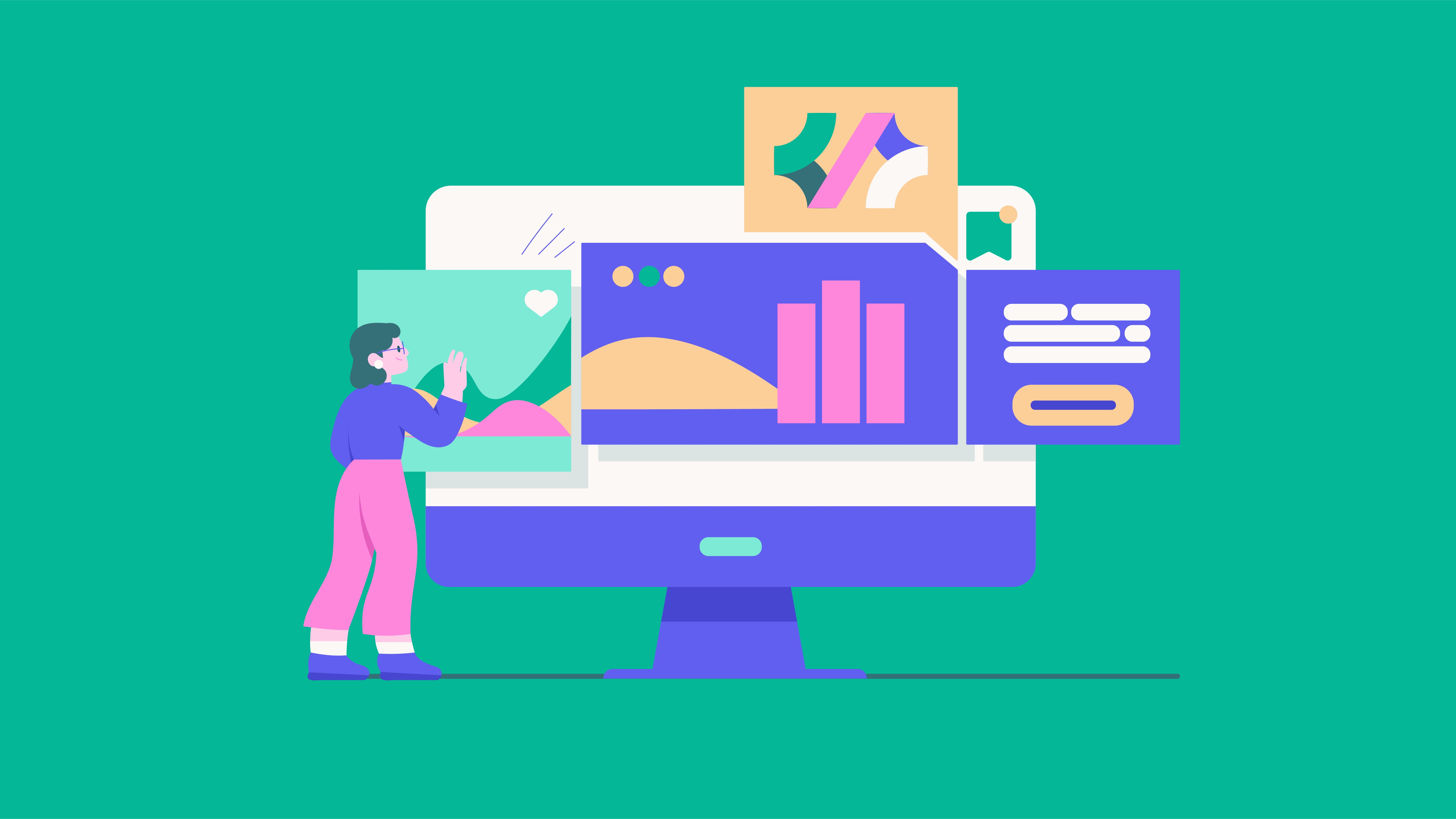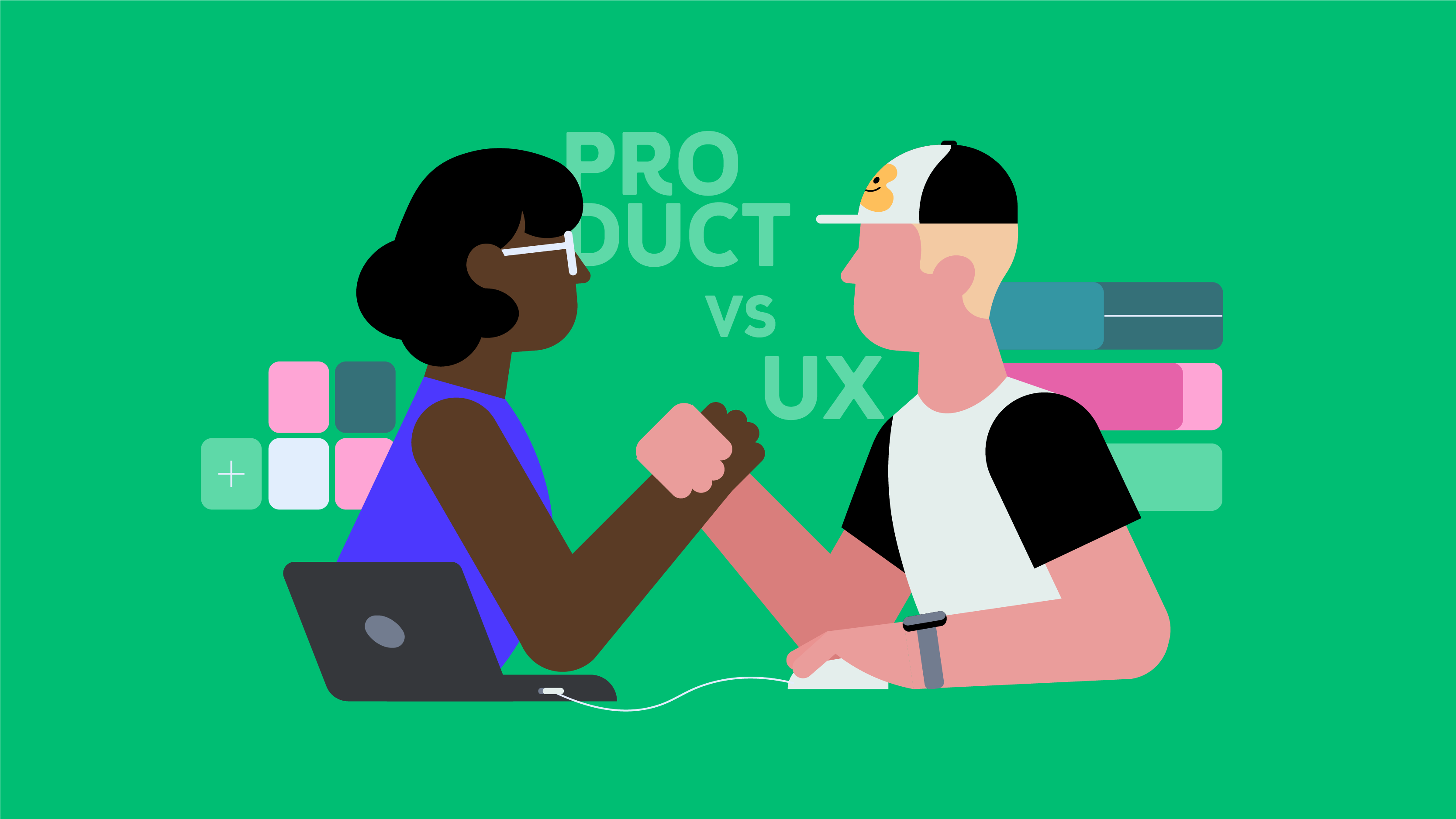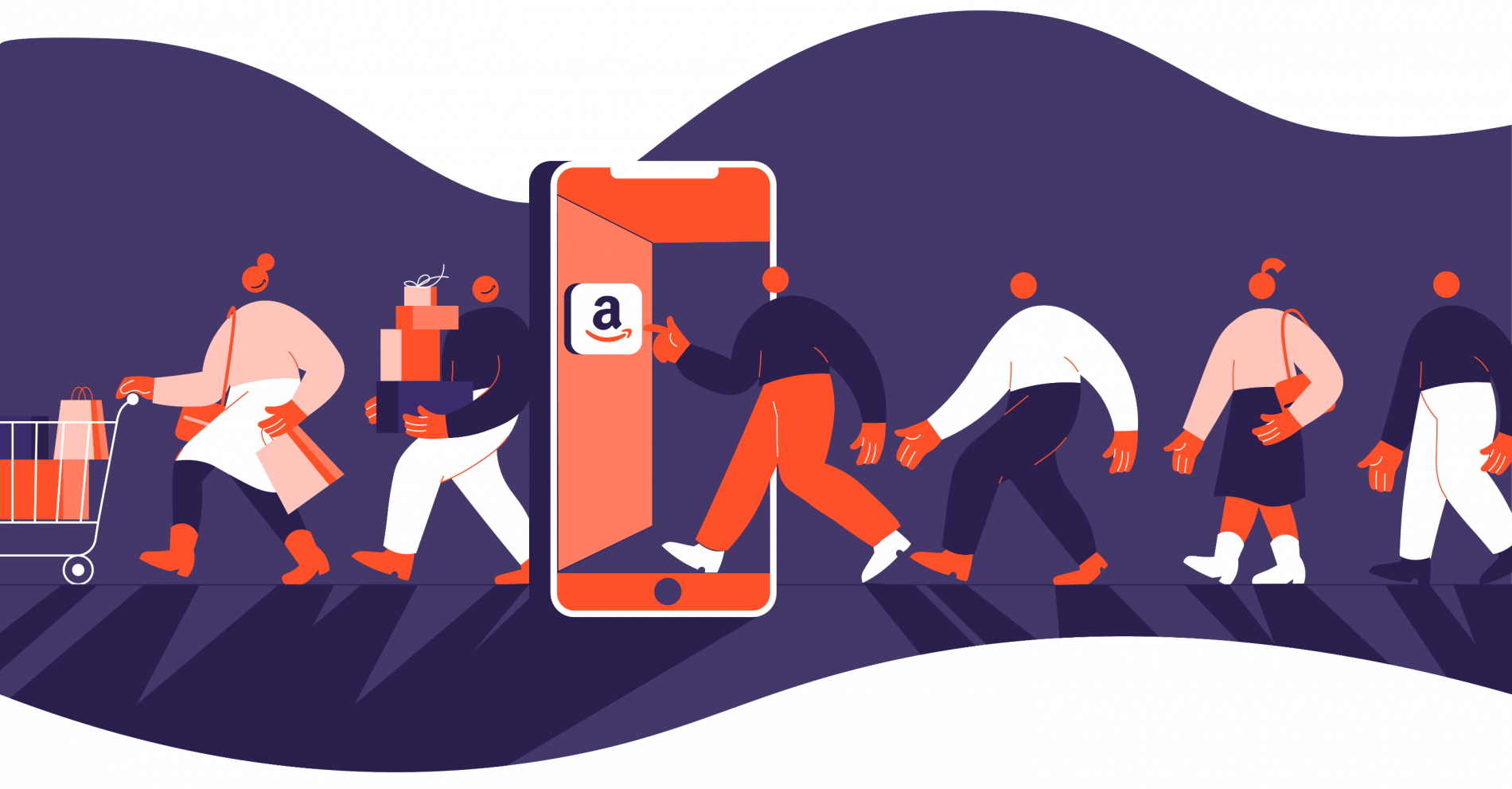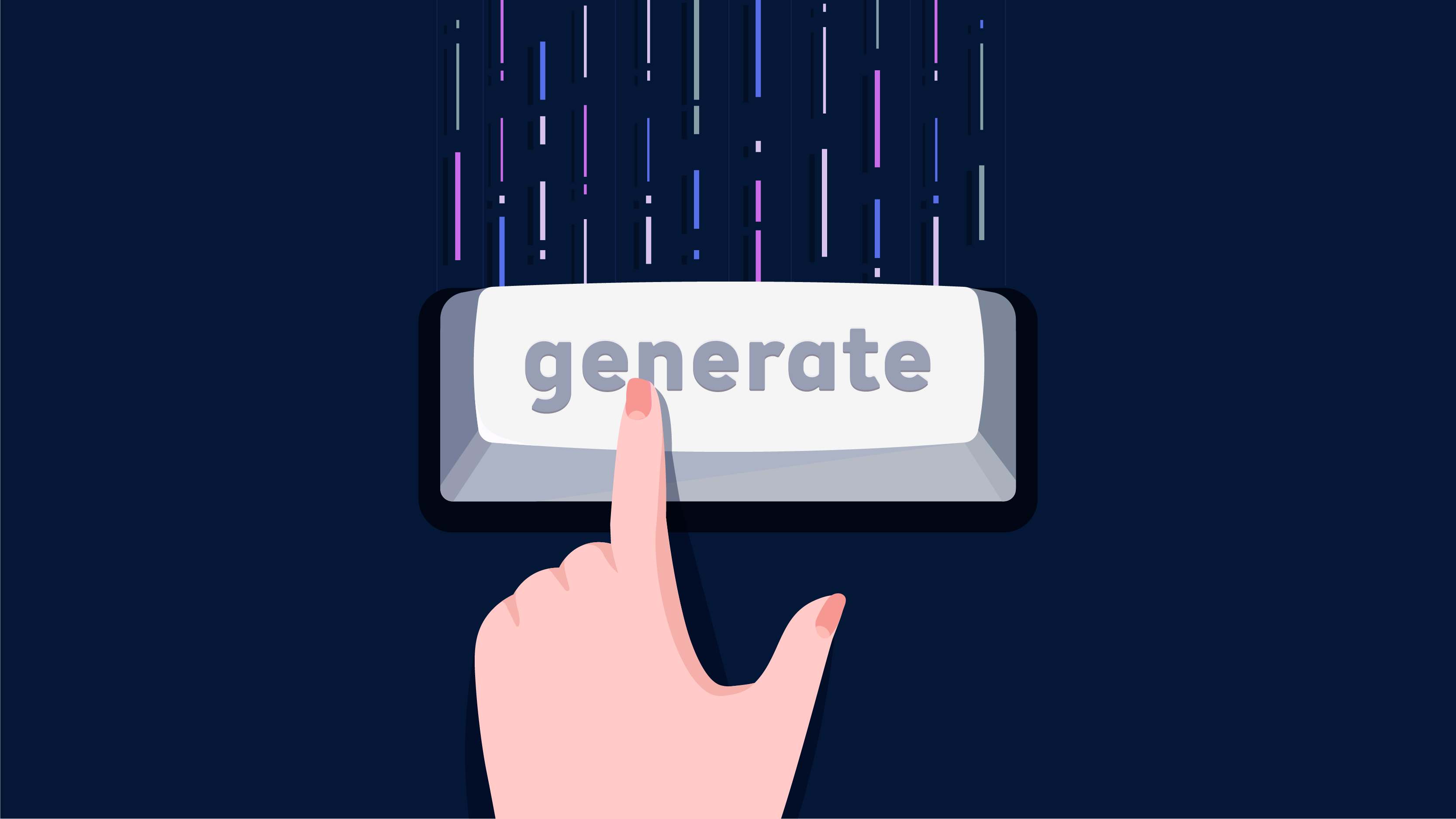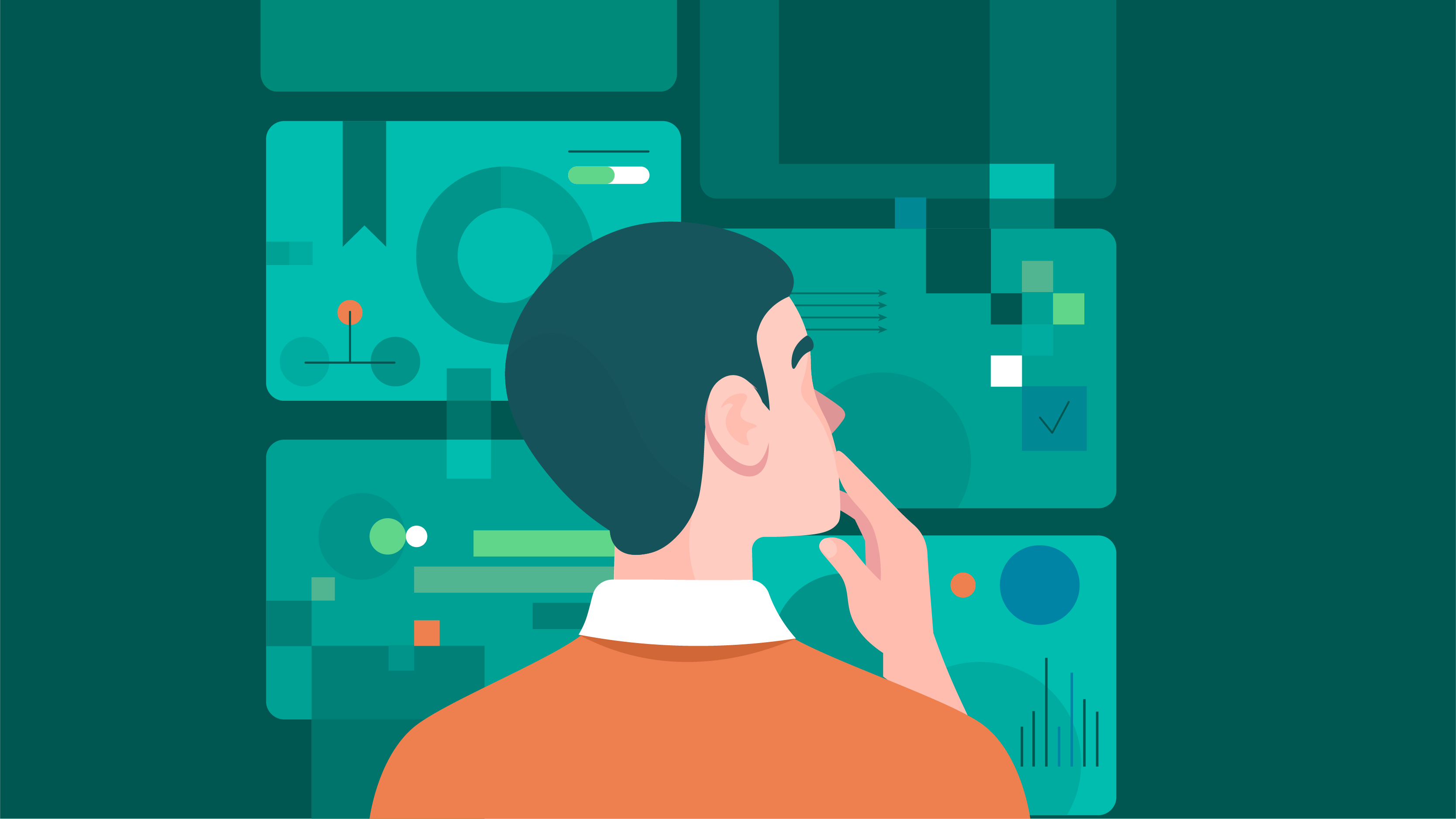The new digital world demands from startups not only a unique proposition but solutions to critical problems. Such a business has to navigate all possible trends and advancements in order to survive in the competition.
In this article, we will look at very different innovations, starting with fintech solutions and ending with e-commerce technology trends. We will also talk about their impact on each industry’s development and the services businesses provide to their customers.
Healthcare: AI, VR/AR, and Distributed Ledger Transformations
If we talk about tech developments in healthcare, three specific technologies have radically changed this industry. Let’s take a closer look at them.
AI and machine learning in healthcare
AI has already become an indispensable part of our lives, and medical services are no exception. Almost every modern medical application has AI and ML-based tools. This technology has significantly influenced the growth of the industry and helped improve the quality of services. Here are a few examples of how this happened.
Diagnostic
AI brings a new era of diagnostic precision thanks to new capabilities for analyzing medical images, pathology reports, and patient data. Machine learning algorithms can identify patterns, anomalies, and potential risks with a level of accuracy that surpasses traditional methods. This has not only improved the overall diagnostic process but also enhanced the quality of patient care.
More accurate and effective personalized treatment plans
The power of artificial intelligence is essential in the creation of personalized treatment plans. AI can analyze vast datasets containing patient histories, genetic information, and treatment outcomes so its algorithms can recommend tailored therapies. This level of personalization holds the potential to improve treatment efficacy while minimizing adverse effects.
Predictive analytics and Big Data analytics
AI’s predictive analytics capabilities are an excellent tool for healthcare providers. It helps to foresee potential health issues and intervene proactively. Again, thanks to the ability to analyze historical data, patient trends, and external factors really fast and accurately, AI can predict disease risks, enabling preventive measures and timely interventions.
Workflow optimization and automation
In addition to diagnosis and treatment, AI simplifies administrative tasks and increases workflow efficiency. AI-powered chatbots and virtual assistants handle routine inquiries, appointment scheduling, and organizational processes, allowing healthcare professionals to focus more on patient care.
Such chatbots are also very useful for more personalized and fast patient service. They are available 24/7 to provide quick answers to common questions, appointment reminders, and recommendations.
Distributed Ledger Technology (DLT) in healthcare
Distributed Ledger Technology (DLT), commonly known as blockchain, is a decentralized and distributed database technology that enables secure and transparent record-keeping of digital transactions and digital asset exchanges across multiple locations or participants. DLT functions as a digital ledger or distributed data storage at its core, but its decentralized nature sets it apart.
In the field of healthcare, this technology is used very actively. Let’s look at examples.
Data security and integrity
Distributed Ledger Technology ensures the security and integrity of patient data, which is incredibly important in a world where information is everything. The decentralized nature of DLT means that health records are distributed across a network of nodes, making it highly resistant to tampering or unauthorized access. This not only safeguards sensitive patient information but also builds trust in the healthcare system.
Interoperability and data sharing
One of the key challenges in healthcare is the siloed nature of data. And people tried to solve this problem in very different ways because, at the same time, it was necessary to ensure the security of information.
DLT solves this by enabling interoperability and secure data exchange between healthcare providers. With their consent, patients can seamlessly share their medical records between different healthcare facilities, promoting collaboration and improving continuity of care. At the same time, they have control over the information they share and can be sure of the safety of the process.
Supply chain traceability
DLT plays a crucial role in ensuring the traceability and authenticity of pharmaceuticals and medical supplies. This technology helps to record the entire supply chain journey on the blockchain so that healthcare organizations can verify the origin, handling, and distribution of medications, reducing the risk of counterfeit drugs and ensuring patient safety.
Smart contracts for healthcare agreements
Smart contracts, self-executing contracts with the terms of the agreement directly written into code, find application in healthcare. These contracts automate processes such as insurance claims, billing, and consent management. This not only reduces administrative overhead but also enhances transparency and reduces the likelihood of disputes.
This is another unconditional advantage of technology, which has greatly simplified the work of medical organizations and the lives of patients.
Smart contracts and self-executing contracts with the terms of the agreement written directly into the code are very popular in healthcare. These contracts automate processes such as insurance claims, billing, and consent management. This not only reduces administrative costs but also increases transparency and minimizes the likelihood of disputes.
Thanks to this, both parties – patients and healthcare institutions, can be confident in the accuracy and validity of documents, as well as in regulatory compliance.
Virtual Reality (VR) and Augmented Reality (AR) in healthcare
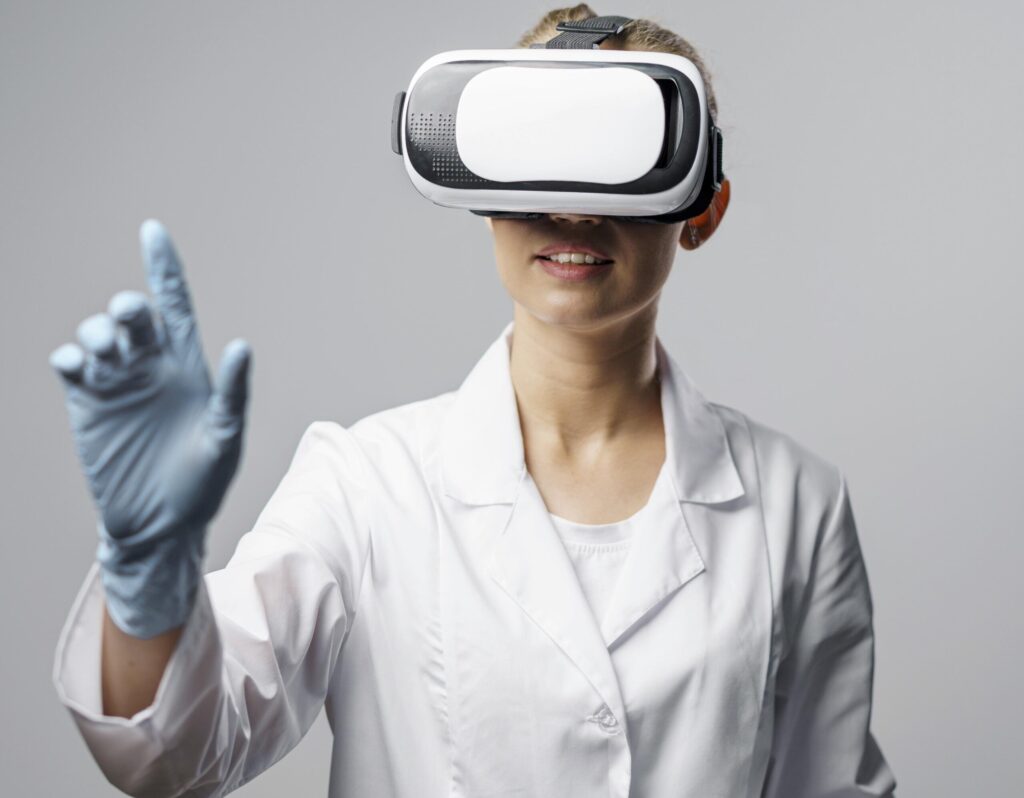
Both of these technologies are very transformative for medical services as they offer innovative solutions to enhance medical training, patient care, and overall healthcare experiences. Let’s take a closer look at their capabilities and usage.
Virtual Reality (VR)
VR is essential for following medical activities:
- Medical training and simulation. VR is revolutionizing medical education by providing immersive and realistic simulations. Healthcare professionals can engage in virtual surgeries, practice complex procedures, and enhance their skills in a risk-free environment. This not only improves the proficiency of medical practitioners but also contributes to patient safety.
- Therapeutic interventions. VR technology is critical in therapeutic interventions, especially in pain management and mental health. Patients undergoing painful treatments or dealing with anxiety can immerse themselves in VR environments that distract and soothe, providing a non-pharmacological approach to pain relief.
- Rehabilitation and physical therapy. The technology is utilized in rehabilitation programs to improve physical therapy exercises. Patients recovering from injuries or surgeries can engage in interactive VR exercises that make the rehabilitation process more motivating. This can lead to better adherence to rehabilitation routines.
- Patient education. VR encourages patient education by offering immersive experiences that help patients understand their medical conditions and treatment plans. Visualizing complex medical concepts in a virtual environment improves patient comprehension and empowers people to make informed decisions about their health.
Augmented Reality (AR)
AR is widely used for the following activities:
- Surgical navigation. AR is transforming surgical procedures by providing real-time, holographic overlays of patient data during surgeries. Surgeons can visualize critical information, such as anatomical structures and preoperative imaging, directly on the patient’s body, improving precision and reducing the risk of errors.
- Medical imaging. The technology enhances medical imaging thanks to overlaying diagnostic information onto the patient’s body. Radiologists and clinicians can visualize 3D reconstructions of medical scans in real-time during procedures, enabling more accurate assessments and facilitating targeted interventions.
- Vein visualization. Healthcare professionals can use AR in vein visualization technologies that assist them in locating veins for procedures like blood draws and intravenous catheter insertions. This improves the accuracy of these procedures, especially in patients with challenging venous access.
- Remote consultations. This technology also facilitates remote consultations thanks to allowing healthcare professionals to share augmented views of patients’ conditions in real time. This is particularly valuable for collaboration between specialists and for providing guidance in emergency situations.
- Healthcare training and maintenance. AR helps in training healthcare professionals in real-world scenarios. Additionally, maintenance personnel can use AR for equipment repair and maintenance, overlaying digital information onto physical devices to streamline troubleshooting processes.
All these technologies continue to develop and provide valuable insights. Thanks to them, the healthcare industry prioritizes accuracy, personalization, and trust in patient care.
Insurance: Tech-Driven Risk Management and Analytics
In the field of insurance, the latest technologies play a key role in risk management and working with customer data. Recently, two main technology trends have been the most successful – Big Data analytics and AI.
Big data analytics is about the ability to process huge data sets in real-time, allowing insurers to make more accurate decisions. This includes assessing the likelihood of claims, identifying trends, and adjusting pricing models based on accurate risk assessments.
This also includes predictive modeling, thanks to which insurers can predict future trends and potential risks. Machine learning algorithms analyze historical data, helping insurers proactively manage and mitigate risk.
It also helps detect and prevent fraudulent activities. Insurers can use advanced algorithms to scrutinize patterns in claims data, flagging anomalies that could indicate fraud. This is one of the most helpful technology trends in insurance app development.
Such analytics also enable personalized underwriting, taking into account individual risk profiles and offering tailored coverage and pricing based on the client’s specific circumstances.
Blockchain technology, one of the most promising new technology trends, is also being actively implemented to ensure transparency and trust in insurance operations. Blockchain smart contracts facilitate automated and transparent claims-handling processes, reducing the likelihood of disputes and increasing overall operational efficiency.
Fintech: Personalized Experiences and Safety with Tech Trends
Fintech is going through rough times, but this industry continues its rapid development.

Here are some technology trends that have gained particular popularity recently:
- Personalization and customer recommendations. Fintech startups are using AI to analyze vast amounts of customer data, gaining valuable insights into spending patterns, investment preferences, and financial goals. Thanks to these statistics and valuable insights, algorithms can provide personalized recommendations for financial products and services, creating a personalized experience for each user.
- Chatbots and virtual assistants. It is already an integral part of customer interaction in the fintech sector. These conversational interfaces help users manage their finances, respond to inquiries, and even complete transactions. The 24/7 availability of these virtual assistants improves customer engagement and provides instant support.
- Blockchain and cryptocurrencies. It is used to revolutionize traditional banking processes and even for enterprise resource planning solutions. Using these technology trends ensures safe and transparent transactions. Cryptocurrencies built on the blockchain offer decentralized and limitless alternatives for transactions and investments, giving users more options and flexibility.
- Robo-advisors and robotic process automation. Algorithm-driven platforms provide automated, low-cost investment advice. These platforms analyze user preferences, risk tolerance, and market trends to offer personalized investment strategies. Robo-advisors democratize access to capital management services.
Most likely, such technology trends in fintech application development will last for a long time, so they are worth your attention.
E-Learning: ML, AI and VR
The development of mobile apps and platforms for e-learning is an important industry that expands the boundaries of education and significantly improves its quality. In recent years, there have been several particularly bright technology trends in this area.
ML and AI
As these technologies continue to evolve, e-learning platforms use their algorithms to tailor learning content, adapt it to individual learning styles, and improve the overall effectiveness of online education.
ML algorithms analyze data about user interaction, preferences, and performance to create adaptive learning paths. This allows e-learning platforms to dynamically adjust the difficulty and sequence of content, ensuring that learners receive personalized assignments and support based on their skill level.
ML also simplifies the assessment process by automating it for certain types of assignments and tests. Not only does this save instructors time, but it also provides instant feedback to students. Startups are also using these technology trends to analyze student performance data to gain valuable information about strengths and weaknesses and learning patterns.
AI enables adaptive learning platforms to make changes to the learning process in real-time. If a student is struggling to understand a certain concept, the system can dynamically provide additional resources, exercises, or alternative explanations to reinforce understanding.
NLP (natural language processing)
NLP, a subset of ML, enhances e-learning through conversational interfaces. NLP-based chatbots and virtual assistants communicate with students in natural language, answering questions, providing explanations, and offering support. This technology trend creates a more interactive and personalized learning environment.
NLP algorithms can also assess students’ language proficiency and comprehension. This analysis helps to adapt language courses to the individual needs of students, adjusting the difficulty of content and exercises according to their language skills.
VR and AR
These technology trends increase interaction, simulate real-world scenarios, and create dynamic learning environments that cater to a variety of subjects and fields.
Virtual Reality (VR) in eLearning creates an immersive 3D environment that allows students to explore historical sites, immerse themselves in virtual labs, or experience hands-on learning in a virtual space without risk.
VR also enables virtual tours and simulations that transcend geographic boundaries. Students can “visit” historical sites, explore ecosystems, or participate in simulations relevant to their field of study.
Augmented reality (AR) in e-learning overlays digital content on a real environment, enhancing learning materials with interactive elements. Textbooks, posters, or even street signs can be supplemented with additional information, multimedia, or 3D models, providing a richer learning experience.
In traditional classrooms, AR brings static objects to life. Teachers can use augmented reality to make lessons more engaging by adding interactive elements, animations, or additional information triggered by AR markers.
This is probably the best of the new technology trends that promote collaboration in learning. Students can use AR-enabled devices to share information, collaborate on projects, or participate in group activities. It promotes the development of teamwork and communication skills in an environment with advanced technologies.
Real Estate: Distributed Data Storage and VR/AR Integration
Real estate startups very often use distributed data storage for secure and decentralized data processing and risk management. Property records, transaction details, and other important information can be stored across a network of nodes, reducing the risk of data loss and unauthorized access, which increases overall data security.
This technology also facilitates simplified collaboration by allowing authorized parties to access and update information in real-time. Blockchain enables the implementation of smart contracts in real estate transactions. They automatically execute and enforce pre-defined conditions when the conditions are met. This reduces the need for intermediaries, increases transparency, and speeds up transaction processes.
The integration of VR and AR into real estate web development is also very popular. Startups are creating immersive virtual property tours, allowing potential buyers or renters to explore properties remotely. It enhances the viewing experience of a physical property by overlaying digital information on a physical environment. For example, AR apps can provide additional information about a property, such as its history, nearby amenities, or even potential renovation ideas.
VR and AR are also valuable tools for architects, developers, and investors in the real estate development process. VR provides an immersive experience of architectural projects, allowing stakeholders to experience and make changes in a virtual environment before construction begins.
E-commerce: Success Built on New Experiences
You can talk about e-commerce technology trends forever because this industry is incredibly dynamic and competitive. The integration of cutting-edge technologies is driving it into the technological future, redefining the retail experience and setting new standards for efficiency.
Let’s take a look at some of the most striking e-commerce technology trends:
- AI and ML. These technologies are taking the world by storm. In the e-commerce industry, they create personalized product recommendations, customer support chatbots, and demand forecasting. They also analyze vast amounts of data to understand consumer behavior, allowing e-commerce businesses to offer personalized experiences and predict market trends.
- AR and VR. Another contender for leadership among the most popular improvements. AR allows customers to visualize products in their physical space before making a purchase, while VR enhances the virtual shopping experience by creating an immersive environment that mimics the feeling of being in a physical store.
- Voice-activated devices and virtual assistants. In e-commerce businesses, they facilitate voice commerce by allowing customers to make purchases using voice commands. E-commerce platforms integrate voice recognition technology to simplify the shopping process, providing users with a hands-free way to interact with online stores.
- Omnichannel integration. This is one of the most promising e-commerce technology trends. Retailers are integrating online and offline channels to provide customers with a consistent experience across multiple touchpoints and improve e-commerce operations. Whether shopping online, in-store, or via mobile devices, consumers expect a seamless and connected journey.
The development of e-commerce and retail apps is constantly moving forward, so there may be many more trends. The ones listed above are the most stable and effective today.
Logistics: IoT, Autonomous Vehicles, and so on
The development of modern logistics apps has reached a new level and uses all possible technical improvements. Let’s start with the main technology trends in this area.
Internet of Things (IoT)
IoT devices, including sensors and GPS trackers, are essential to track shipments and assets in real-time. This provides greater visibility into the supply chain, allowing logistics providers to monitor the location, status, and condition of goods throughout their journey.
Also, smart warehouse solutions include IoT sensors to monitor warehouse conditions, including temperature, humidity, and storage conditions. This ensures that goods are stored in optimal conditions, reducing the risk of spoilage or damage. Smart warehouses also facilitate better inventory control and order accuracy.
Data analysis and predictive modeling
Advanced data analytics and predictive modeling optimize logistics operations by analyzing historical data to forecast demand, optimize routes, and improve overall supply chain efficiency. Predictive analytics help predict potential failures, enabling proactive decision-making and minimizing delays. This is an incredibly important trend that has significantly improved the security and transparency of logistics operations.
Autonomous vehicles and drones
The integration of autonomous vehicles and drones is changing delivery and warehouse operations in the “last mile.” Such delivery vehicles can navigate congestion, reducing delivery times and costs. This technology increases the speed and accuracy of order fulfillment, especially in urban conditions.
Blockchain for supply chain transparency
Blockchain technology is used to increase transparency and traceability in the supply chain. By creating an immutable and decentralized ledger, blockchain ensures data integrity, reduces the risk of fraud, and provides a secure and transparent record of transactions from producer to end user.
Warehouse automation and robotics
Robotics and automation technologies are transforming warehouse operations. Automated guided vehicles (AGVs), robotic pickers, and sorting systems all significantly improve order accuracy, reduce manual labor, and increase the overall efficiency of warehouse processes, contributing to faster and more reliable order fulfillment.
Effective route optimization
Advanced algorithms use real-time data to determine the most efficient routes for transportation. This not only reduces fuel consumption and transportation costs but also minimizes delivery times, contributing to a more sustainable and customer-centric logistics model.
Inventory management using RFID technology
Radio Frequency Identification (RFID) technology improves inventory management by providing real-time visibility into inventory levels. RFID tags on products offer accurate tracking, reducing the chance of shortages or overstocking. This ensures that products are available when and where they are needed.
Collaborative logistics platforms
Collaborative logistics platforms use digital ecosystems to connect different stakeholders in the supply chain. These platforms facilitate real-time communication, data sharing, and collaboration between manufacturers, suppliers, carriers, and retailers. It also facilitates a more connected and agile logistics network.
Tourism: New Travel Experiences and Risk Control

If we talk about the tech trends of startups in developing travel platforms, it is worth emphasizing new travel experiences. Of course, VR and AR play the main role in this). Virtual tours allow users to explore iconic landmarks, cultural sites, and natural wonders from the comfort of their homes, previewing what awaits them in person.
In addition, such apps provide real-time information about points of interest, historical facts, and itineraries, enhancing destination research. Travelers can overlay digital information on the physical world using their mobile devices.
What trends are still worth paying attention to?
- Personalized travel planning with AI. Algorithms analyze travelers’ preferences, past behavior, and real-time data to provide personalized travel recommendations.
- Dynamic pricing and booking platforms. Travel platforms use dynamic pricing algorithms that take into account factors such as demand, booking time, and user behavior.
- Digital tour guides and language translation. Mobile apps with UI/UX design that includes digital guides offer travelers insight into the history, culture, and significance of landmarks. In addition, language translation apps facilitate real-time communication, overcoming language barriers and improving the overall travel experience.
- Smart hotels and IoT integration. These technologies allow travel operators to provide a personalized and automated experience. From smart room controls to connected devices, travelers can enjoy seamless and intuitive interactions with their accommodations.
Travel risk management programs are also worth paying special attention to. Such apps provide real-time updates on safety and security conditions at specific destinations, as well as health advisories and emergency services.
SaaS: No-Code Platforms and Sustainability
SaaS solutions have become incredibly popular due to their flexibility, availability, and scalability. Many companies are moving to such platforms and have high hopes for their development.
In the field of SaaS development, it is worth paying attention to such new technological trends:
- Vertical SaaS. These are solutions designed for specific industries such as healthcare, finance, or logistics. Startups recognize the potential to solve industry problems by providing targeted software solutions that streamline processes and increase efficiency in a specific industry.
- Programs based on AI. Of course, the integration of AI was also necessary here. Using ML algorithms, startups extend the capabilities of their applications by offering intelligent features that automate tasks, provide data-driven insights, and optimize user interactions.
- New tools for collaborative and remote work. The shift to remote work has accelerated the demand for collaboration and productivity tools. SaaS startups are innovating in areas such as project management, team communication, and virtual collaboration, offering solutions that enable seamless remote work.
- Low-code/no-code platforms. SaaS startups recognize the need to democratize software development. Low-code and no-code platforms allow users with limited programming skills to build and customize applications. In this regard, SaaS solutions make software creation more accessible to a wider audience.
Also, startups focus on stability, which is becoming a mandatory criterion for any software. Companies implement green practices in their operations, data centers, and product offerings. Sustainable development initiatives promote corporate social responsibility and resonate with environmentally conscious customers.
Wrapping Up
In conclusion, the adoption of tools and technologies based on AI and ML algorithms is a technical trend that has affected almost every industry. Such solutions, in combination with IoT and VR/AR, shape the future of customer service, which requires today’s personalized experience, security, and quality of service provision.
The main focus of every startup today is the customer and their unique needs, so all technological improvements relate to this in one way or another. By creating a unique environment and analyzing data, businesses learn to provide services that meet precise criteria and conditions.
Transforming a technological solution and implementing trendy tools is not an easy process, but it becomes cheaper and more efficient if professionals help you. We at Cadabra Studio are ready to assist you in your digital venture. Let’s talk.


